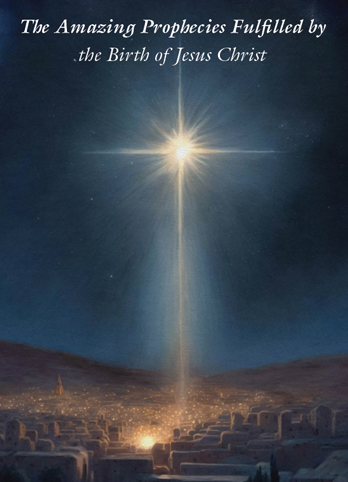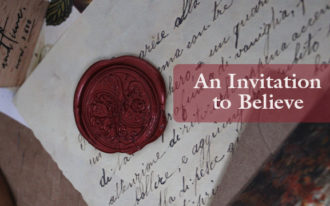Back to series


The Ministry of the Messiah
December 20
View the Full Advent Calendar
Music recording by Ben Doggett. From Come Thou Almighty King , originally published anonymously in 1757. View the Lyrics. Narration by Aimee Riegert.
Old Testament Prophecy:
“Here is my servant, whom I uphold, my chosen one in whom I delight; I will put my Spirit on him, and he will bring justice to the nations. He will not shout or cry out, or raise his voice in the streets. A bruised reed he will not break, and a smoldering wick he will not snuff out. In faithfulness he will bring forth justice; he will not falter or be discouraged till he establishes justice on earth. In his teaching the islands will put their hope.”
– Isaiah 42:1–4
(Isaiah wrote this between 740 and 701 BC)
New Testament Fulfillment:
“And the scroll of the prophet Isaiah was given to him. He unrolled the scroll and found the place where it was written, ‘The Spirit of the Lord is upon me, because he has anointed me to proclaim good news to the poor. He has sent me to proclaim liberty to the captives and recovering of sight to the blind, to set at liberty those who are oppressed, to proclaim the year of the Lord’s favor.’ “And he rolled up the scroll and gave it back to the attendant and sat down. And the eyes of all in the synagogue were fixed on him. And he began to say to them, ‘Today this Scripture has been fulfilled in your hearing.’”
– Luke 4:17–21
(Luke wrote this around 60 AD)

Devotional by Dave Chaves.
Image: The Mishnah records the early oral traditions of rabbis in first and second centuries AD— including teaching about the expected Messiah. A section of the Kauffman Manuscript of the Mishnah is pictured here.
There are five Servant Songs in the book of Isaiah. Each of these songs describes the ministry of God’s righteous servant who will come to bring justice and redemption. Ancient Jewish commentators identified the servant in these songs as predicting a coming Messiah. The first Servant Song is found in Isaiah 42:1–9 and introduces the Servant of the Lord as God’s chosen one. The language of Isaiah 42 is used at Jesus’ baptism. When the Father “puts” the Spirit on the Son, Jesus is identified as the “beloved” with whom God is “well pleased” (Luke 3:22).
This gentle Messiah will bring justice, He will be “a covenant for the people” and distant islands will put their hope in His teaching. The next Servant Song, in Isaiah 49, describes how the Messiah was formed in the womb to bring the people of Israel back to God (49:5). It echoes the idea that the Servant will be “a light for the Gentiles” that God’s “salvation may reach to the ends of the earth” (49:6).
The third Servant Song, along with the second, describes the Servant’s speech. His mouth is like “a sharpened sword,” and He is One who hears and teaches God’s truth. Accused and mocked, He offers His back to those who beat Him, yet God will vindicate Him (50:4–9).
The most famous Servant Song runs from Isaiah 52:13 to 53:12. It outlines the rejection, suffering, and sacrificial death of the Messiah. He is “pierced for our transgressions,” “pours out His life as an offering for sin,” and is assigned a grave with the wicked and the rich. Yet after His suffering, “he will see the light of life.”
The final Servant Song appears in Isaiah 61. Although it does not use the word servant, it continues the themes of the other four songs. It repeats language from the first song, of a Spirit-filled Messiah who will open the eyes of the blind and set the captives free. All five Servant Songs are applied to Jesus in the New Testament either by Himself or by others. This includes at the start of His public ministry (Luke 4:17–21) and before His public crucifixion (Luke 22:37).
![]()
Prayer
Suffering Servant, may Your salvation
reach to the ends of the earth.
Amen.

Dave Chaves
Technology and Product Development Manager, CSLI
Dave Chaves, Technology and Product Development Manager, has worked in nonprofit, Christian communications for over 10 years, including most recently with Five Talents USA. He holds a master’s degree from Georgetown University and an MDiv from Africa International University. He’s been involved in cross-cultural missions in East Africa for over 10 years and is an Associate Missionary with the Society of Anglican Missionaries and Senders. Dave met his lovely wife Lucy in Kenya and they have four children. He is excited to be part of the CSLI team and to support communications and technology to further the ministry of discipleship.





